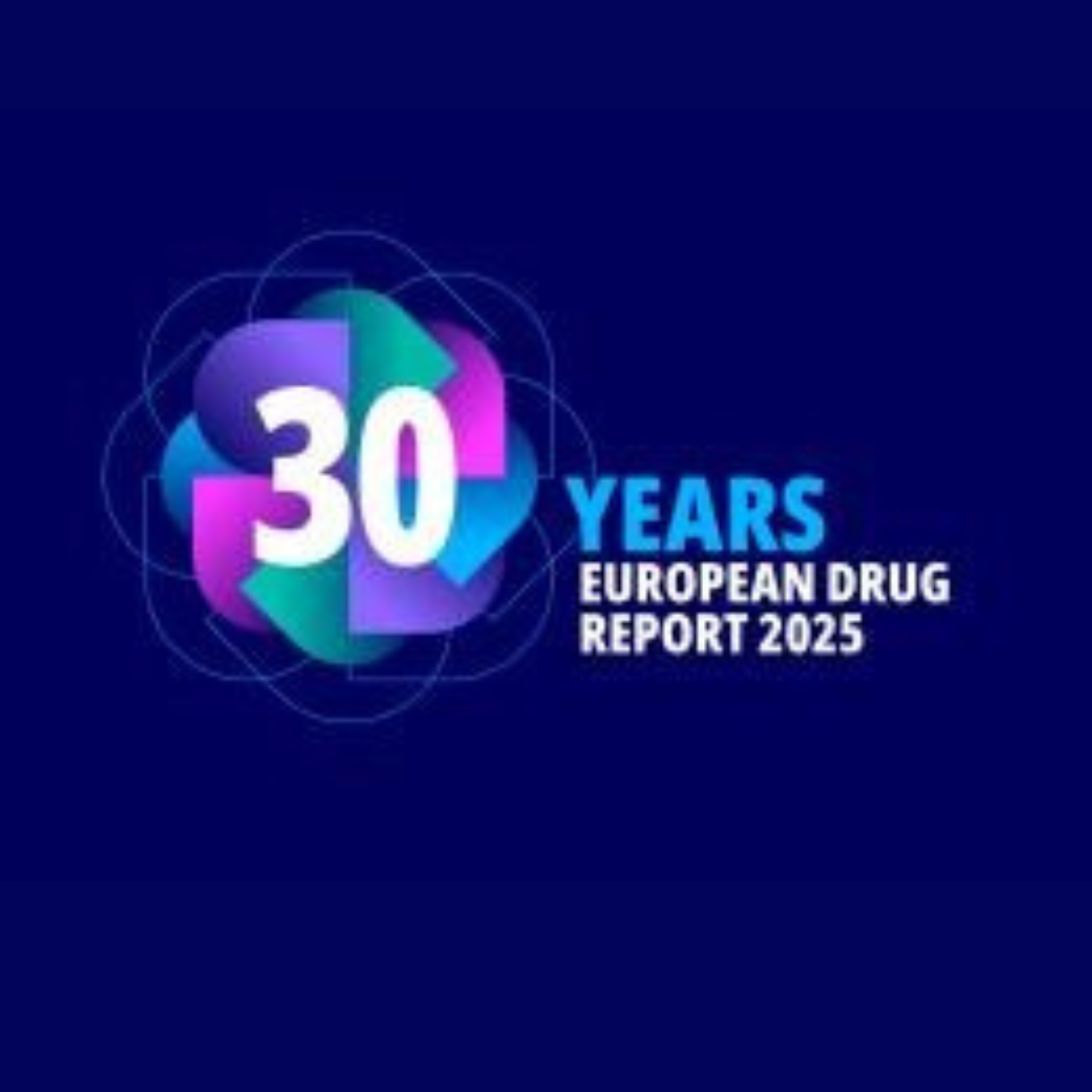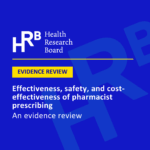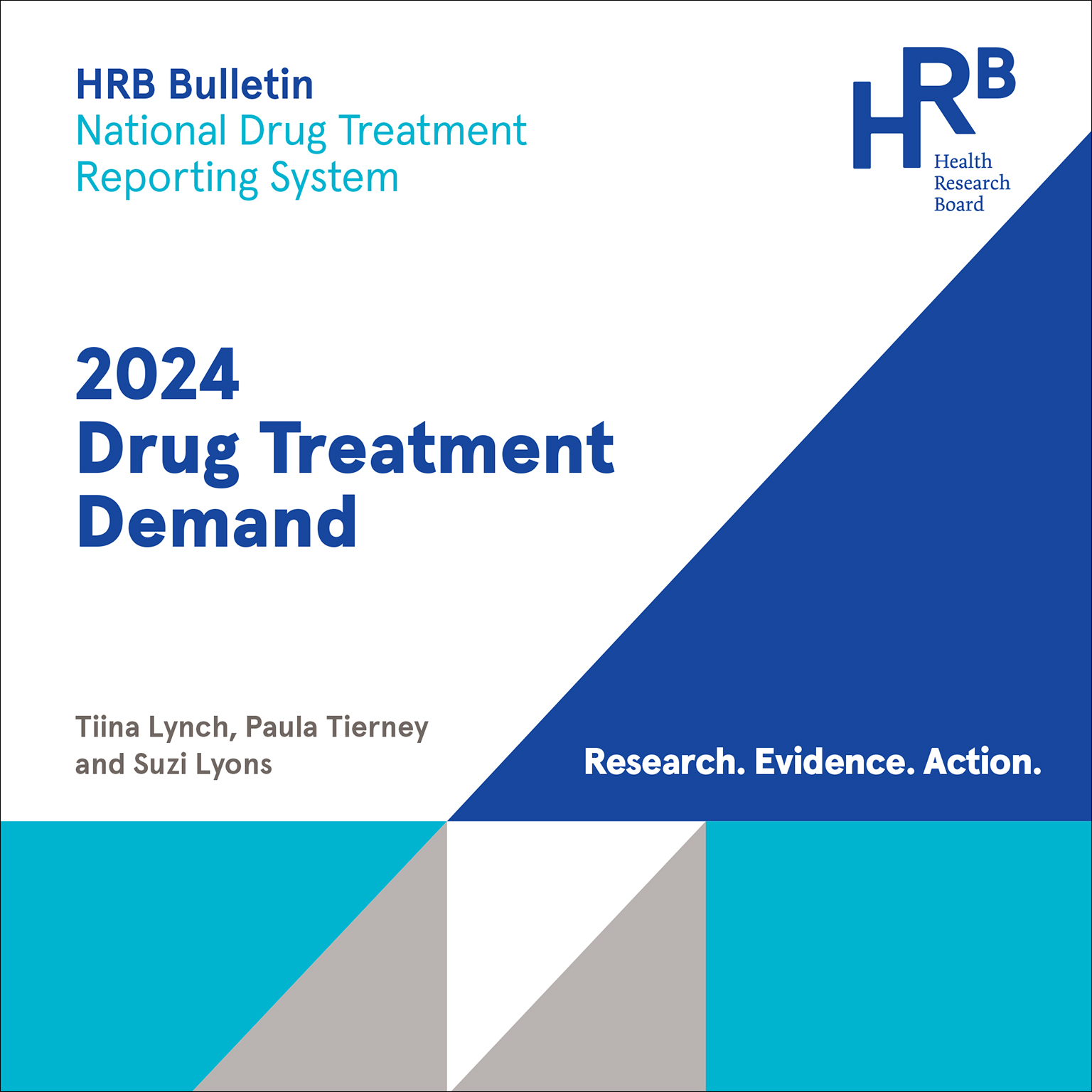European Drug Report 2025
This media brief provides an overview of the drug situation in Europe and a comparison with the Irish drug situation where possible.
9 min read - 5 Jun 2025

The European Union Drugs Agency (EUDA) today publishes the European drug report 2025: trends and developments (EDR). The purpose of this report is to provide an overview and summary of the European drug situation up to the end of 2024.
The Health Research Board (HRB) provides the Irish data and research for the EUDA report. This media brief provides an overview of the drug situation in Europe and a comparison with the Irish drug situation where possible. The Irish data presented in the EUDA report were provided at the end of 2023. Since then, the HRB has published the 2024 data on treatment and is due to publish prevalence data in early July. Links to latest reports on Irish data are available at the end of this brief.
Latest EUDA data
Cocaine
Cocaine is, after cannabis, the second most commonly used illicit drug in Europe. While levels and patterns of use differ considerably between countries, the availability of cocaine continues to increase.
The extent of cocaine trafficking to the EU was reflected in the record quantities seized in Members States, with 419 tonnes seized in 2023, up from 323 tonnes in 2022, despite coordinated efforts, such as the European Ports Alliance, in response to this trade. Illicit processing of cocaine products takes place in several EU Member States, with several cocaine laboratories reported to have been dismantled each year.
The cocaine trade has a direct impact on public health. The use of cocaine can result in dependent and compulsive patterns of use and is associated with a number of adverse health consequences. A 2021 review of mortality among people with regular or problematic cocaine use found that the risk of death by suicide, accidental injury, homicide and AIDS-related mortality were all elevated when compared with non-cocaine using cohorts.
Knowledge of effective treatments for those experiencing problems with stimulant use is growing, and psychosocial interventions are commonly used. However, treatment for those from marginalised groups presents problems as cocaine use is often part of a wider polysubstance use problem.
European situation
- In the European Union, almost 2.7 million 15- to 34-year-olds (2.7 % of this age group) used cocaine in the last year.
- Cocaine was the second most common problem drug among people entering specialist drug treatment for the first time in 2023, cited by an estimated 34,000 clients or 26 % of all first-time entrants
- Among the 21 European countries providing data for both years, cocaine was involved in 1,086 drug-induced deaths in 2023 (974 or 22 % in 2022).
- Cocaine residues in municipal wastewater increased in 39 out of 72 cities with data for both 2024 and 2023, while 17 cities reported no change and 16 cities reported a decrease.
Irish comparison
- In Ireland the most recent National Drug and Alcohol Survey (NDAS) in 2019-20 shows that 4.7 per cent of 15–34-year-olds used cocaine in the last year.
- Cocaine was the most common drug reported for those entering treatment in Ireland in 2023. The 4,708 entrants accounted for 37.4% of all cases. Almost half of this group were first time entrants.
- In 2023, of all treatment entries for cocaine use, 24.4% cases were recorded with crack cocaine as the main problem.
- Cocaine poisoning deaths increased from 24 deaths in 2011 to 107 in 2021, accounting for 3 in 10 of all poisoning deaths.
Cannabis
The number of high-potency cannabis products available on the market is increasing, and the long-term use of these products is associated with a range of physical and mental health problems, including chronic respiratory symptoms, cannabis dependence and psychotic symptoms, and social problems such as reduced educational achievement. Psychosocial treatments, such as cognitive behavioural therapy and motivational interviewing, are offered and in most EU Member States and these are interventions with the strongest evidence of effectiveness in interventions for problematic cannabis use.
European situation
- Cannabis is the most used illicit drug in Europe, across all age groups, with national surveys of showing that an estimated 8.4 % of European adults (24.0 million aged 15 to 64) have used cannabis in the last year.
- Last year cannabis use among the EU population aged 15–34 is estimated at 15.4 % (15.5 million people). Among 15- to 34-year-olds, an estimated 2.2 % (2.2 million) are daily or almost daily cannabis users.
- Wastewater analysis shows that cannabis use was highest in cites in the west and south of Europe, in particular in Spain, the Netherlands, Portugal and Norway.
- Cannabis was the main problem drug most frequently cited by new treatment clients, accounting for 45% of all first-time treatment entrants.
- In 2023, EU Member States reported 265,000 seizures of cannabis resin amounting to 511 tonnes (468 tonnes in 2022) and 219,000 seizures of herbal cannabis amounting to 185 tonnes (265 tonnes in 2022).
- In 2023, the average Tetrahydrocannabinol (THC, the principal psychoactive constituent of cannabis) content of cannabis resin in the European Union was 23 %, more than twice that of herbal cannabis, at 11 %. Indexed trends show that the average THC content of resin almost doubled between 2013 and 2023, whereas that of herbal cannabis remained generally stable.
Irish comparison
- The 2019/20 National Drug and Alcohol Survey (NDAS) reported that 24.4% of the population (15–64 years) had used cannabis at some point in their lives; 7.1% reported use in the year prior to the survey and 3.4% in the preceding month
- The NDAS reported that 13.8% of young adults (15-34 years) used cannabis in the year prior to the survey
- The 2019 ESPAD survey reported that 16% of Irish secondary school students (aged 15–16) had used cannabis in the last 12 months (recent use).
- Cannabis was the main problem drug for 2,220 of cases (17.6% of all cases) entering drug treatment in Ireland in 2023, and for 29% of all first-time entrants.
Opioids (mainly heroin)
Heroin remains Europe’s most commonly used illicit opioid, continues to be involved in drug-related deaths and remains the most commonly reported opioid in acute toxicity presentations at emergency departments. However, the opioid phenomenon is continuing to evolve and other opioids have become more prominent. In some locations, treatment presentations for use of medicines, diverted from health services, or potent new synthetic opioids, are becoming more common than presentations for heroin use.
Data on cases entering drug treatment show that the cohort of heroin users in Europe is ageing, placing pressure on services to respond to a more complex range of health and social problems among clients presenting. Use of opioids in combination with substances such as alcohol, benzodiazepines, cocaine crack cocaine and amphetamines increases risks to health and presents further challenges to treatment services.
European situation
- It is estimated that 0.3 % of the European Union adult population, or around 860 000 people, used opioids in 2023 (stable compared to 2022).
- Opioid use was reported as the main reason for entering specialist drug treatment by 63,500 clients in 2023, representing 23 % of all those entering drug treatment in Europe.
- National data from 26 European Union Member States show that an estimated 511,000 clients received opioid agonist treatment, such as methadone treatment, which is a replacement for heroin, in 2023 (510,000 in 2022).
- Opioids, including heroin and its metabolites, often in combination with other substances, were present in seven out of then cases of fatal overdose in 2023 for which toxicological information is available.
- Since 2009, a total of 88 new opioids have been identified on the European drug market, with seven new substances notified in 2024, all of which were highly potent nitazene opioids, which can be hundreds of times more potent than heroin.
- In 2023, 20 countries reported 927 seizures of new synthetic opioids, amounting to 22 kilograms, to the EU Early Warning System, an increase from the 17 kilograms seized in 2022. Notably, the quantity of nitazenes seized in 2023 tripled, from 3 to 10 kilograms.
Irish comparison
- The proportion of all entrants to treatment reporting an opioid as their main problem drug has decreased year on year since 2004, from a peak of 65% in 2004 to 29% in 2023.
- Heroin accounted for 86.6% of all opioid treatment cases in 2023.
- Opioids were implicated in 244 drug poisoning deaths in 2021, almost 7 in 10 of all drug poisoning deaths that year.
- In total, there were an estimated 19,875 problematic opioid users in Ireland in 2019. The majority of problematic opioid users were male (72.3%) and more than two-thirds (733%) of problematic opioid users were in the older (35–64 years) age group.
New psychoactive substances and stimulants
European situation
At the end of 2024, the EMCDDA was monitoring over 1,000 new psychoactive substances, 47 of which were first reported in Europe in 2024. The 24 new cannabinoids detected accounted for over half of the new substances first reported to the EU Early Warning System in 2022.
Synthetic cathinones and new synthetic opioids are sold as replacements for stimulants such as amphetamine or opioids such as heroin, respectively. In 2022, large quantities of cathinones continued to be seized. In EU Member States, synthetic cathinones have become established in the stimulant market alongside other drugs such as amphetamine and cocaine. These drugs are now more likely to be intentionally purchased than in the past, when the served as replacements for other stimulants or were consumed unknowingly. Even though many of these substances have similar chemical structures, the psychoactive effects and possible harmful effects may vary significantly. Cathinones such as 4-CMC are similar to MDMA and amphetamines, but others are very different to these better-known drugs.
MDMA is the second most commonly used illicit stimulant in Europe, after cocaine. Much MDMA is produced in Europe, concentrated in the Netherlands and Belgium. There are indications that MDMA produced in Europe is being trafficked to Latin America in exchange for cocaine. The average MDMA content of ecstasy tables in 2023 was between 138 and 158 milligrams, compared to around 84 milligrams in 2011. Higher strength products increase the potential of adverse health consequences, particularly if MDMA is consumed in combination with other substances.
European situation
- Surveys conducted by 24 EU Member States between 2017 and 2024 suggest that 1.6 million young adults (15 to 34) used amphetamines (amphetamine and methamphetamine) during the last year (1.6 % of this age group).
- Surveys conducted by 26 EU countries between 2015 and 2024 suggest that 2.6 million young adults (aged 15 to 34) used MDMA in the last year (2.6 % of this age group), with 2.7 % (1.3 million) of those aged 15 to 24 years estimated to have used MDMA in the last year.
- In 2023, two EU Member States reported dismantling 35 MDMA laboratories. Belgium reported four MDMA laboratories, with the Netherlands reporting 31.
- Approximately 350 new psychoactive substances were detected in seizures in 2023.
Irish comparison
- The 2019/20 National Drug and Alcohol Survey reported 6.5% young adults (aged 15-34 years) used MDMA in the last year, with 1.9% of young adults had taken a new psychoactive substances in the past year.
- Amphetamines or other stimulants, including MDMA (alone or with other drugs) was implicated in 12 poisoning deaths in 2021.
- Benzodiazepines were the main problem drug for 11% of cases entering treatment in 2023.
Recently published Irish data
Since data was submitted to the EUDA for this most recent report, the HRB has published, or will shortly publish, more recent data on prevalence and drug treatment in Ireland:
- National Drug Treatment Reporting System: 2024 drug treatment demand.
- Prevalence of problematic opioid use in Ireland, 2020–2022.
- Drug use in Ireland. Findings from the 2022–2023 Healthy Ireland survey. (To be published in July 2025)
ENDS
If you have any queries in relation to the Irish figures, you can contact:
Brian Galvin, Programme Manager for Drug and Alcohol Research, Health Research Board
m +353 86 1573471 e bgalvin@hrb.ie
9 min read - 5 Jun 2025



